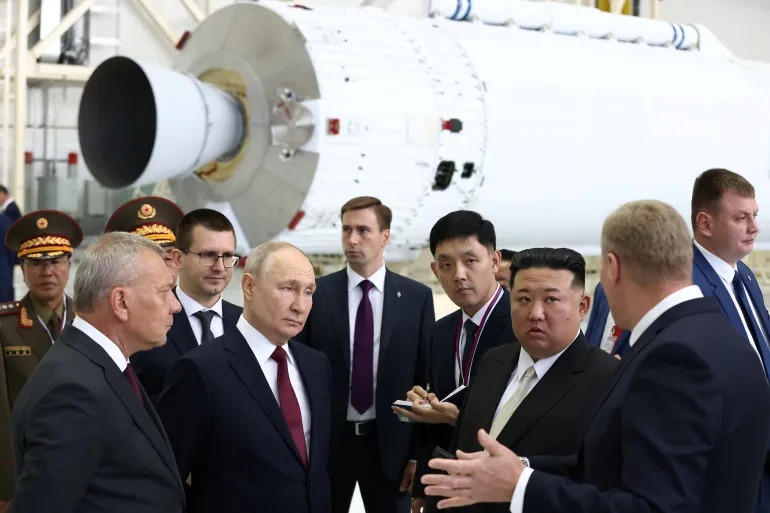North Korean leader Kim Jong Un and Russian President Vladimir Putin have convened at the Vostochny Cosmodrome, just hours after North Korea launched two short-range ballistic missiles off its eastern coast. This high-stakes summit is set to address a range of pressing issues, including potential arms sales, economic aid, and military technology cooperation. The meeting comes amid growing concerns about North Korea’s persistent missile tests and their implications for international security.
Arms Sales in Focus: Kim-Putin Talks Expected to Cover Weapons Deals
As the leaders of North Korea and Russia exchange pleasantries at the Vostochny Cosmodrome, the primary topic on the agenda is expected to be arms sales. Kim Jong Un, accompanied by top officials from the North Korean military and weapons industry, aims to secure crucial military technology from Russia. On the other hand, President Putin sees this as an opportunity to bolster Russia’s weapons arsenal, particularly in light of the ongoing conflict in Ukraine. Putin’s offer to help North Korea build satellites hints at the multifaceted nature of these negotiations, where economic and military interests intertwine.
South Korea and Japan Detect North Korean Ballistic Missiles
The timing of this high-stakes summit is underscored by the launch of two short-range ballistic missiles from North Korea’s eastern coast, detected independently by South Korea and Japan. South Korea’s Joint Chiefs of Staff reported the missile launches, which occurred in close proximity to Pyongyang, and is currently analyzing the data. Japan, alarmed by the missile launches, lodged a diplomatic protest through channels in Beijing. Fortunately, the missiles fell outside Japan’s exclusive economic zone, avoiding direct territorial infringement.
North Korea’s Persistent Missile Tests: A Challenge to International Sanctions and Security
North Korea’s recent missile tests, including this latest launch, present a significant challenge to international sanctions and regional security. Despite United Nations’ sanctions imposed in 2017, North Korea continues to defy restrictions and advance its military capabilities. With over 100 missile launches since the beginning of last year, Pyongyang’s determination to modernize its military is clear. Notably, North Korea claimed the August missile launches were a simulation of a tactical nuclear strike on South Korea, raising the stakes in an already volatile region.
Furthermore, North Korea’s recent launch ceremony for the ‘tactical nuclear attack’ submarine, the Hero Kim Kun Ok, has heightened concerns about the regime’s military capabilities. Additionally, North Korea’s attempts to put a military spy satellite into orbit have faced two consecutive failures this year. These developments underscore the complexities of North Korea’s missile and nuclear programs, which have grown more sophisticated.
While Kim Jong Un engages in diplomatic talks abroad, questions remain about how he maintains command and control over North Korea’s missile and nuclear forces. Analysts have noted a system resembling those used by the United States and Russia, with state media reports outlining a hierarchical process, including unit commanders, launch approval mechanisms, and technical devices governing nuclear weapons control. This enigmatic system adds an element of intrigue to the ongoing negotiations between Kim and Putin.
















